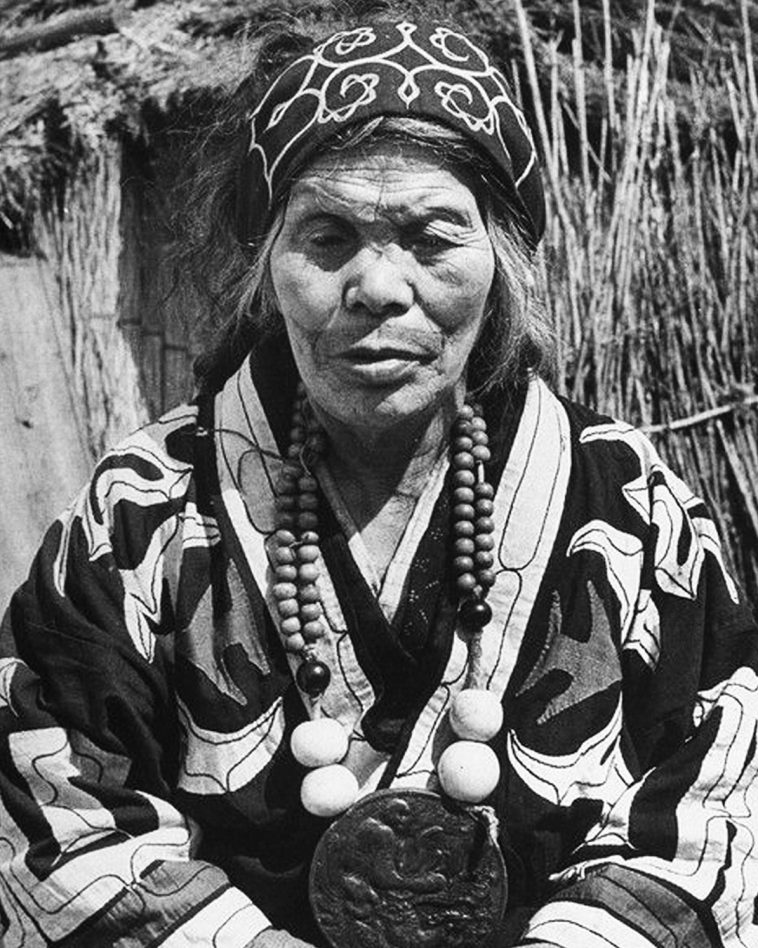Russia’s contribution to the history of art includes everything from medieval iconography to 20th century constructivism, but when it comes to the country’s tattoo traditions, there’s still a lot to learn. Most people are familiar with Soviet criminal tattoos: a phenomenon that, despite worldwide praise and recognition, is still considered controversial in Russia itself. But prison tattoos are by no means the only tattoo style to have originated in Russia.
Tyumen-born Herman Devyashin and Sasha Morozov had the idea to start a national tattoo archive after visiting a major exhibition on global tattoo art, currently on show at The Pushkin State Museum of Fine Arts in Moscow. Though the exhibition spanned 3000 years, Russian examples were limited to prison tattoos, with little attention paid to tattoo traditions in Russia’s indigenous Arctic, Siberian, or Caucasian communities. The exhibition did, however, honour Russian anthropologists such as Nicholas Miklouho-Maclay, who became the first scholar to study the tattoo art in 19th-century New Guinea.


“My main interest are Russian tribal and indigenous tattoos,” says Morozov. “I’ve recently discovered Dagestan’s rich tattoo heritage, where tattoos were popular with women who covered themselves extensively in body art before Islam arrived. The Russian North also has a fascinating history of tattoo art. In fact, tattooing has always been a marker of identity: it shows that you are a part of a community.”
Yet, attitudes towards tattoos varied across the country. “Some Yakuts [an ethnic group living in Russia’s Sakha region] endorsed tattoos, while others would totally reject them. I believe it’s essential to explore and document ancient traditions to overcome prejudices and the stigma of tattoo art in Russia.”
.jpg)
Morozov has been reading about tattoo history since 2010, when he met Devyashin; both were studying physics at the Ural Federal University in Yekaterinburg. He has since worked as a helicopter pilot in Colombia and South Sudan, and spent the last two years in eastern Africa, where he researched local tattoo traditions of Uganda, Kenya and South Africa. Devyashin, on the other hand, started out as a graffiti artist in Tyumen before moving to Berlin where he worked in the AKA tattoo community. On his return to Russia, he set out on a tattoo tour from Kaliningrad to Vladivostok, spanning 15 Russian towns and documenting local tattooing communities. Devyashin is currently based in Moscow, where he has been channeling Siberian ironic conceptualism in his tattoo art. The two founders have always exchanged their tattoo findings, and this past February finally decided to begin @russiantattoohistory.


In their research, the pair came across the story of Ukoku, a tattoo-covered princess who lived in the Altai mountains back in the third century BC. Even Nicholas II was a fan of body art, brandishing a large dragon on his forearm, inspired by his trip with Britain’s George V to Japan. In the 19th century, tattoos were a status symbol among European royals and aristocrats. The British King Edward VII had a Jerusalem Cross tattooed during his trip to the Holy Land in 1862. Later on, his son George followed suit. George V and Nicholas II left Nagasaki with matching tattoos: distinguished by its black body, yellow horns, red belly, and green feet. In the letter to his sister Kseniya, the Tsar remembers spending a total of seven hours getting inked.
The founders of @russiantattoohistory believe tattoos provide crucial insight into Russia’s multiculturalism — and they’re appealing especially to younger audiences. They have also delved back to the era of Peter the Great to understand how the craft was developed and institutionalised. “During the 19th century, tattoos were not only a marker for soon-to-be exiled criminals. This was also a time of great ethnographic expeditions: those who had the opportunity to travel would tattoo ornaments they’d come across as a souvenir to show off back home. Before and after the 1917 Revolution, tattoos started becoming popular among soldiers, and later were a form of protest against Soviet rule,” Herman explains.






“For years, ‘criminal tattoos’ had been Russia’s only recognised genre. Hence, there was a strong disregard for tattoos as an art form in Russia in general,” Morozov says. Luckily the tattoo scene is now thriving across the country, including in Tyumen where the founders are from, with younger artists adding their own creative spin inspired by everything from folklore to optical illusions.


Russian Tattoo History is a crowd-sourced platform. The team are currently welcoming images from family archives to continue their research. If you wish to contribute to the project, please send your images of tattooed family members to Sasha and Herman via Instagram or the email address on the @russiantattoohistory page.





